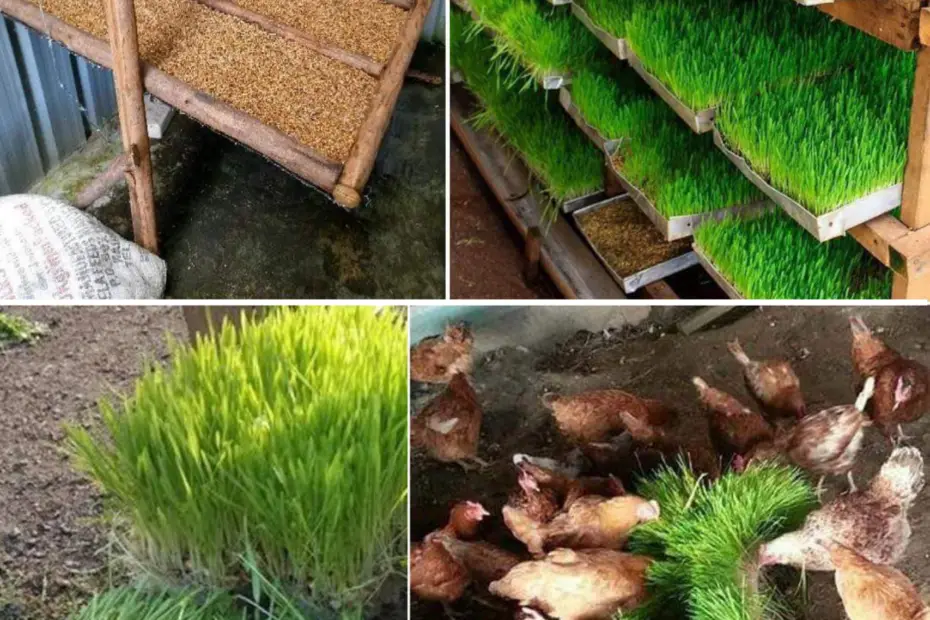
Growing feed for chickens is an economical and nutrient-rich way to supplement their diet and ensure they get a balanced supply of vitamins, minerals and enzymes. Feed, essentially sprouted grains, provides chickens with fresh greens even without pasture, thus promoting their health and potentially improving egg quality. This guide describes a straightforward process for growing feed efficiently at home.
Step 1: Select seeds
- Grain selection: Wheat, barley and oats are popular choices for chicken feed due to their nutrient content and germination rate. To avoid harmful chemicals, non-GMO and organic seeds are preferred.
- Amount: Start small to gauge how much your chickens eat. As a general rule, feed them 2-3% of their body weight in food each day.
Step 2: Prepare seeds
- Soaking: Rinse the selected seeds thoroughly in clean water. Soak the seeds in a bucket of water for 12 to 24 hours to induce germination. This soaking phase reduces antinutrients and aids digestion.
- Rinse: After soaking, drain and rinse the seeds to remove any residue or inhibitors. This step is crucial to prevent mold growth during germination.
Step 3: Set up your growing area
- Trays: Use shallow trays with drainage holes to spread the seeds. Each tray can be filled with a single layer of seeds. If drainage is a problem, consider placing the trays on racks or trellises to ensure proper air circulation.
- Location: Choose a well-ventilated area with indirect light. While direct sunlight is not required for germination, some light will support healthy, green shoot growth.
Step 4: Growing food
- Watering: Keep the seeds moist but not soaked. Lightly watering two to three times a day should be sufficient. Proper drainage is essential to prevent mold.
- Germination: You should see sprouts within a few days. Continue to rinse and drain the seeds daily.
- Harvesting: The forage is usually ready for harvesting after 7 to 10 days, when the shoots are about 10 to 15 cm high and the roots have formed a mat.
Step 5: Feeding food to chickens
- Introduction to food: First mix food into the regular food to get them used to it. Chickens generally get used to fresh greens quickly.
- Daily rations: Monitor how much feed your chickens eat to adjust your growth rate accordingly. Fresh feed can make up to 20% of their diet.
- Storage: Fresh food is best, but can be stored in a cool, dry place for a short time if necessary.
Benefits of feed for chickens
- Nutritional value: Feed is a rich source of vitamins, minerals and live enzymes that have a positive effect on the health of chickens.
- Digestibility: Germinating grains makes them easier for chickens to digest, allowing for better nutrient absorption.
- Cost-effective: Growing your own feed can significantly reduce feed costs over time.
Diploma
Growing forage for chickens is a worthwhile endeavor that can significantly improve the nutritional quality of their diet. By following these simple steps, you can create a sustainable source of fresh greens for your flock, contributing to their health and well-being. Remember, the key to success is maintaining clean and moist conditions to ensure a bountiful forage harvest.
